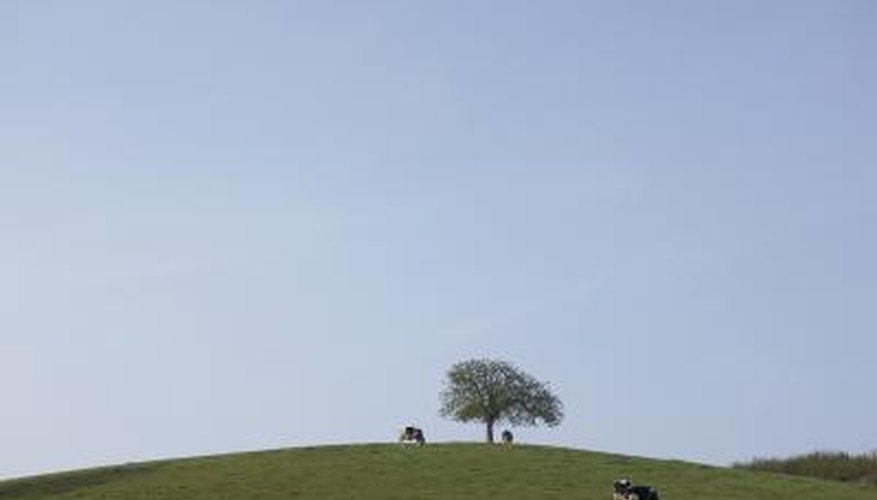Weathering is the process by which rock is broken down into smaller and smaller pieces until it becomes soil. There are two primary types of weathering: physical weathering and chemical weathering. Physical or chemical weathering that is caused by the actions of living organisms is sometimes referred to as "biological weathering."
Benefits
Weathering provides the sediments that form sedimentary rocks, and some forms of chemical weathering help to remove carbon dioxide from the atmosphere. Much more important, however, is that weathering creates nutrient-rich soil that allows plants and trees to grow, and ultimately makes life on Earth possible. If weathering never occurred, the Earth would have a surface of bare rock, and no plant or animal life could exist.
Damage to Man-Made Structures
All man-made structures eventually break down, and this gradual disintegration is due to the processes of weathering. A form of physical weathering known as root wedging breaks through concrete and pavement. In colder climates, ice wedging may occur when water gets into a crack and freezes. Over time, this can damage roadways (a phenomenon known as "frost heaving"), homes and buildings built from stone and brick, and man-made monuments. Forms of chemical weathering such as oxidation (commonly called "rusting") can also damage man-made structures over time.
- All man-made structures eventually break down, and this gradual disintegration is due to the processes of weathering.
- Over time, this can damage roadways (a phenomenon known as "frost heaving"), homes and buildings built from stone and brick, and man-made monuments.
Natural Disasters
By breaking rock apart into smaller pieces, weathering makes possible a form of erosion by gravity that is called "mass wasting." Unfortunately, mass wasting can destroy man-made structures and can even kill. Rockfall is a form of mass wasting that occurs when weathered rocks fall from cliffs or steep hillsides. Rockslides are another form of mass wasting that can damage homes or endanger lives. Perhaps the most dangerous and destructive form of mass wasting is mudflow, commonly referred to as mudslides. Mudslides commonly bury homes, as well as any person unlucky enough to be caught in their path.
- By breaking rock apart into smaller pieces, weathering makes possible a form of erosion by gravity that is called "mass wasting."
- Rockfall is a form of mass wasting that occurs when weathered rocks fall from cliffs or steep hillsides.
Damage to Shores and Farms
The same weathering processes producing the soil that allows vegetation to grow on Earth also make possible the erosion of soil. Soil that has been weathered down into to small-enough particles can be carried away by wind and water. This is of particular concern to farmers, because soil erosion can reduce the fertility and thereby decrease the productivity of farmland. The actions of ocean waves can also carry weathered sand out to sea, which leads to the loss of beaches and coastal property.
- The same weathering processes producing the soil that allows vegetation to grow on Earth also make possible the erosion of soil.
